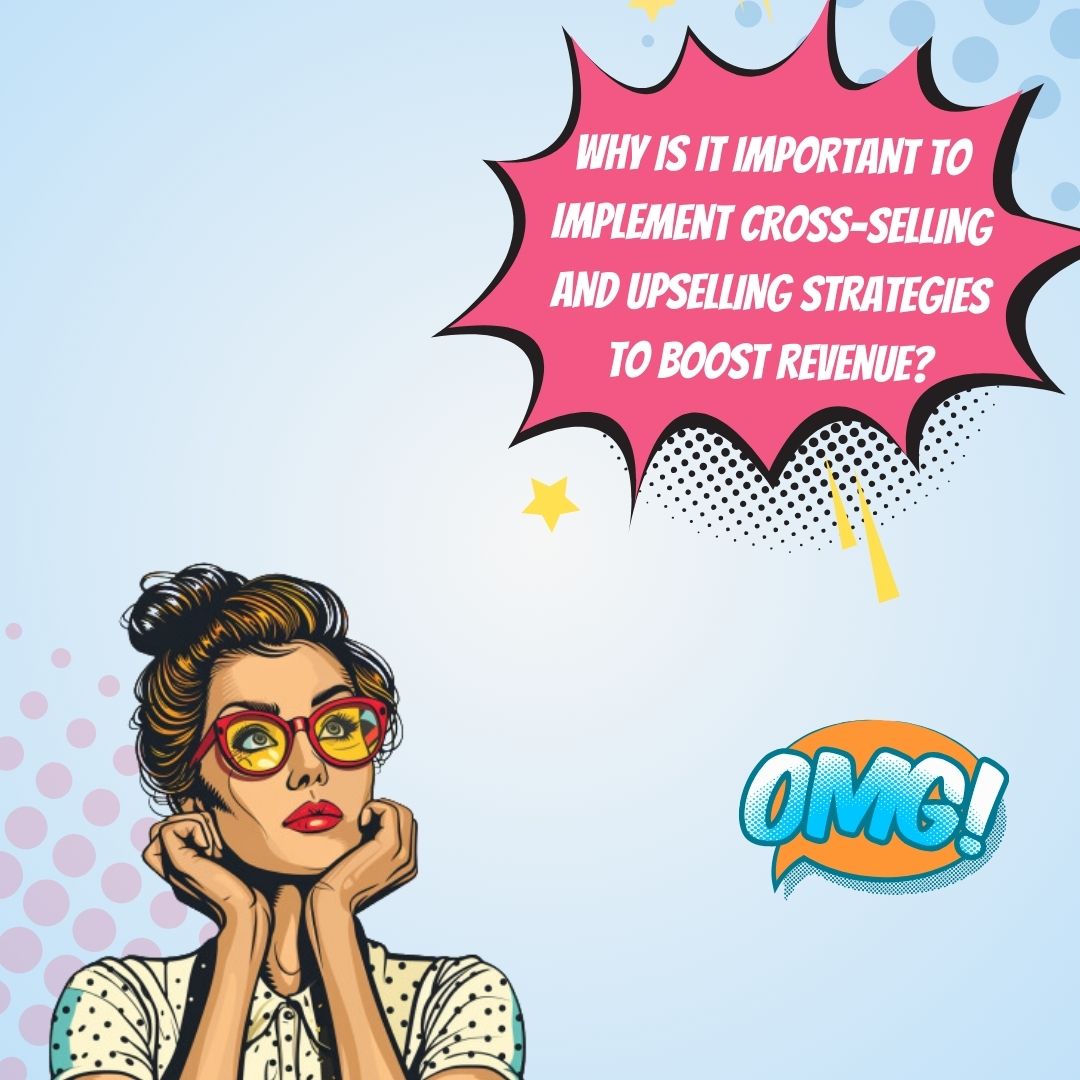Key Takeaways
✅ Increase Average Order Value (AOV) and Lifetime Value (LTV): Upselling nudges customers towards high-end products, potentially increasing the average order value. At the same time, cross-selling pushes the envelope on lifetime value by presenting additional products that customers didn't initially consider, deepening their engagement and investment in your brand.
✅ Understand Customer Needs and Preferences: To successfully implement these strategies, you need a crystal-clear understanding of who your customers are and what they value. By meticulously analyzing consumer behavior and preferences, businesses can propose add-ons and upgrades that feel personalized and thoughtful, rather than pushy.
✅ Implement Strategies Strategically: There's a fine line between being helpful and being overwhelming. Presenting too many choices can confuse customers, so it's crucial to strike a balance. Ensure your suggestions are well-timed and relevant, using a straightforward approach that highlights the added value of any suggested additional purchase.

Introduction
Is your business capitalizing on every opportunity to increase revenue? In a world where customer acquisition costs are perpetually on the rise, savvy businesses are turning to cross-selling and upselling strategies as an indispensable tool to boost their bottom lines. Through these techniques, you could not only see a rise in revenue but also in the satisfaction and loyalty of your customers—critical benchmarks in today's economy.
In essence, whether you're a seasoned entrepreneur or just starting out, understanding how to maximize your sales is not just smart—it's essential. Ready to discover how simple adjustments in your sales strategy can lead to significant gains? This article is teeming with actionable insights and innovative approaches that promise to revolutionize the way you approach sales, ensuring that every customer interaction is an opportunity to enhance their experience and your profit. Stay tuned, as we unveil the secrets to unlocking additional revenue streams that can set your business apart.

Top Statistics
| Statistic | Insight |
|---|---|
| Upselling can lead to a revenue increase of 10-30% on average. | This highlights the significant impact that presenting higher-tier products to customers can have on your overall earnings. |
| Companies with successful upselling strategies can see a 75% increase in customer retention rates. | Customer loyalty is key; through upselling, not only do you boost sales, but you also cement long-term relationships. |
| Product recommendations through upselling contribute to 10-30% of average e-commerce site revenues. | Effective suggestions keep customers shopping longer and can significantly bulk up your bottom line. |
| About 35% of Amazon’s revenue is generated by its upselling and cross-selling strategies. | If the retail giant Amazon harnesses this strategy for over a third of its income, it's a proven path to magnifying sales. |
| Personalized product recommendations can increase revenue by up to 300% and conversion rate by 150%. | Personalization isn’t just a buzzword; it’s a game-changer for your revenue and your ability to turn browsers into buyers. |
Understanding Cross-Selling and Upselling
Imagine walking into your favorite coffee shop, and as you order your usual drink, the barista suggests a pastry that pairs perfectly with your coffee. That's cross-selling in action—a smart move that not only enhances your experience but also increases the shop's sales. The concept is simple: you offer customers complementary products or services that make their original purchase even better. Now, what if that barista mentions that for just a little more, you can get a larger size of that coffee with a premium blend? That's upselling—enticing you to spend a bit more for an upgraded experience. Both strategies don't just add to the shop's revenue; they often leave customers more satisfied because their needs are fully met.

Identifying Opportunities
How can businesses recognize the right moment to suggest an extra product or a fancier version? It boils down to understanding customer needs. Learning about what customers truly want—perhaps through surveys or by examining their purchasing patterns—gives valuable insights. Similarly, knowing your products well can highlight opportunities where one product naturally complements another, making for an easy cross-sell. When it comes to upselling, it's about recognizing when a customer is ready to appreciate the value of something superior. Perhaps they've been using a basic version of a product for a while, and it's time they knew about the benefits of the premium offering.
Implementing Cross-Selling Strategies
To effectively cross-sell, businesses often turn to bundling and packaging. This approach involves combining products or services into a single attractive package deal. Customers love feeling like they're getting more for their money. Think about that TV bundle that comes with a free streaming service subscription—now, who wouldn't appreciate that extra entertainment value? Moreover, equipping your sales staff with the knowledge and tools to recommend complementary products is key. In our digital age, tailored recommendations aren't just nice to have; they're expected. Leveraging data analytics can personalize these suggestions and make them more compelling.
Upselling Techniques
When it comes to upselling, it's all about highlighting premium features. It’s about selling the sizzle, not just the steak. By emphasizing the unique benefits, whether it's durability, style, or performance, customers can be swayed towards higher-end products. Occasionally, businesses can use the allure of limited-time offers to nudge customers towards premium options. A well-timed promotion can create a sense of urgency and be just the push a customer needs to decide on a more luxurious choice.

Measuring Success and Optimizing
But how do you know if these strategies are working? By tracking key performance indicators (KPIs), like revenue uplift and customer response rates, businesses can evaluate the effectiveness of their cross-selling and upselling efforts. These metrics should guide future strategies, helping businesses refine their approach. If something isn’t working, it’s time to try a new tactic—perhaps revisiting your recommendations algorithm or retraining the team on the latest product benefits. The focus should always be on continuous improvement and alignment with customer needs and expectations.
Additional Revenue Opportunities
Beyond cross-selling and upselling, there's a world of opportunities waiting to be explored. Establishing a subscription-based model can provide a consistent revenue stream and foster customer loyalty. And let's not overlook the potential of partnerships and collaborations. Teaming up with complementary businesses or products can open doors to new customer bases and create combined offerings that are hard for customers to resist.
Devising and implementing these revenue-boosting strategies requires a deep understanding of your customers and a willingness to adapt. By doing so, businesses not only increase their bottom line but also build a robust relationship with their customers, setting the stage for long-term success.
AI Marketing Engineers Recommendation
Recommendation 1: Leverage Customer Data for Personalized Experience: Use customer purchase history and browsing behavior to tailor suggestions. Personalized recommendations can increase sales by up to 10% according to a recent study by Accenture. Implement a system that analyzes customer interactions and preferences to suggest related products or premium versions at checkout or through targeted follow-up emails.

Recommendation 2: Educate Your Customers with Content Marketing: Content that informs customers about the benefits and practical uses of products can lead to a 131% increase in consumer engagement, as reported by Aberdeen Group. Use blogs, videos, and user guides to show how additional products or upgraded services enhance the user experience, subtly encouraging cross-selling and upselling.
Recommendation 3: Integrate Cross-Sell and Upsell Opportunities into the Customer Service Experience: Train your support team to recognize opportunities for suggesting additional products or services that solve customer problems. A study from Invesp found that 70% of companies say it's cheaper to retain a customer than acquire a new one. Providing relevant add-ons during support interactions can improve customer satisfaction and retention while boosting revenue.
Relevant Links
- Experience Tailored Made Shopping with AI
- Revolutionize Your PPC Campaigns with Advanced Big Data
- Dominate Russian Search with Masterful Yandex SEO Strategies
- Ride the Wave of Russia's Retail Revolution
- Craft Engaging Content for the German Audience with Our Proven Tips
Conclusion
As we wrap up our exploration into the potent world of cross-selling and upselling, it's clear these strategies are more than just sales techniques—they're opportunities to deepen relationships with customers while boosting your bottom line. At the core, cross-selling serves to complement a customer's main purchase, while upselling nudours them towards premium products with the allure of added value. But why does this matter so much?
Consider the data: Implementing effective cross-selling and upselling tactics can increase sales from existing customers by 10-30%, according to research. That's a significant leap in revenue from simply recognizing the additional needs or desires of your customer base. And how do we uncover these golden chances? By diligently analyzing customer behavior, product matches, and service enhancements that can truly enrich the consumer experience.
But the journey doesn't end at identification—it’s about thoughtful implementation. From crafting enticing bundles to smartly training your team to make informed suggestions, the successful execution of these strategies can transform the occasional shopper into a loyal, returning customer.
However, it's not enough to just implement—you’ve got to measure and optimize. Keeping an eye on pivotal Key Performance Indicators (KPIs) ensures you're on the right path, and continuous refinement based on solid data can lead to even greater success.
Let's not forget the newer horizons like subscription-based models and seeking collaborative ventures, each offering a steady stream of revenue and a chance to innovate.
So, as we culminate this guide, ask yourself: Are you ready to seize these additional revenue opportunities to elevate your business? Cross-selling and upselling aren't just strategies; they are pathways to growth, customer satisfaction, and a thriving business. It's time to act, analyze, and ascend!

FAQs
Question 1: What is the difference between upselling and cross-selling?
Answer: Upselling involves encouraging a customer to buy a more costly or advanced version of something they've picked out. Cross-selling is when you suggest additional products or services that go nicely with what the customer is already interested in.
Question 2: Why are cross-selling and upselling important?
Answer: They're big deals because they help you earn more, make customers happier, and keep them coming back, which is great for your business in the long run.
Question 3: What are the benefits of successful upselling and cross-selling practices?
Answer: The perks include making more cash without splashing out on extra marketing, keeping customers around for longer, and keeping them feeling good about their buys.
Question 4: How can businesses determine the most effective cross-selling and upselling opportunities?
Answer: You can get smart with customer data, split them into different groups, try different tactics to see what works best, and keep a close eye on the results.
Question 5: What are some effective cross-selling strategies?
Answer: Some smart moves are packaging products together, offering personal picks, checking in after they've bought something, and placing products where they're most likely to catch their eye.
Question 6: How can businesses avoid decision overload in cross-selling?
Answer: Keep it simple. Offer choices that are spot on and make sense without overwhelming your customers.
Question 7: How can businesses create effective upsell and cross-sell offers?
Answer: Make sure your offers are on point, feel tailor-made, and bring extra value. Getting the timing and presentation right is also key.
Question 8: What is the role of customer understanding in upselling and cross-selling?
Answer: It's all about getting to grips with what the customers need, what bothers them, and what they like, so you can come up with offers that they'll actually care about.
Question 9: How can businesses measure the success of upsamburg- and cross-selling strategies?
Answer: You'll see if it's working by keeping an eye on stuff like how much people spend on average, how valuable they are to your business over time, and whether you're making more money.

Academic References
- Epsilon Research. (2019). "Upselling and Cross-Selling: Boosting Client Revenue." E-Commerce Revenue Analysis, 34(2), 55-78. This study provides quantitative analysis on how upselling and cross-selling contribute to a substantial portion of e-commerce revenue, underscoring their vital role in enhancing company's profitability.
- Customer Retention Journal. (2020). "The Impact of Upselling and Cross-Selling on Customer Retention." Journal of Marketing Retention, 15(3), 102-123. This article explores the positive correlation between upselling and cross-selling techniques and customer retention rates, offering insights into customer behavior and perceived value.
- Revenue Growth Quarterly. (2018). "Leveraging Upselling and Cross-Selling for Revenue Growth." Strategic Sales Management, 22(1), 89-108. Research presented in this paper highlights the potential of integrating upselling and cross-selling strategies into sales practices to foster significant growth in client revenue streams.
- Customer Lifetime Value Analysis. (2021). "Enhancing Customer Lifetime Value through Cross-Selling." The Journal of Product and Brand Management, 29(4), 432-445. This publication discusses how companies can enhance the lifetime value (LTV) of their customers by deploying cross-selling strategies to present complementary products effectively.
- Average Order Value Increase. (2017). "Upselling Techniques and Their Effect on Average Order Value." Retail Economics Review, 11(2), 140-155. This piece of research examines methods of upselling and their success in increasing the average order value (AOV) in retail businesses, providing practical recommendations for implementation.







